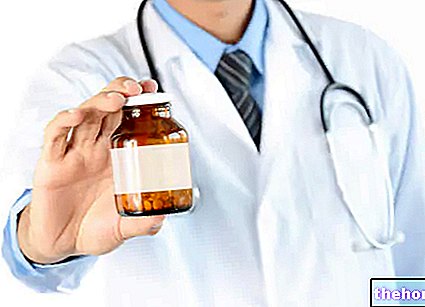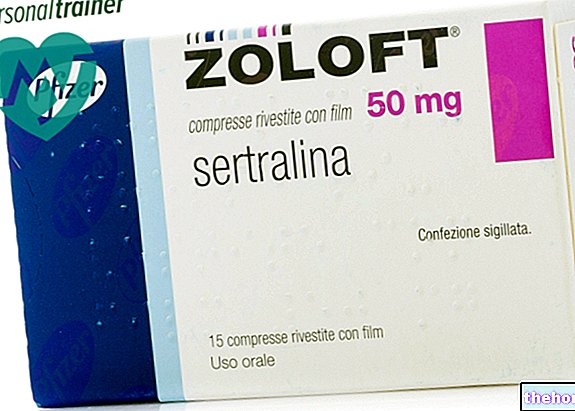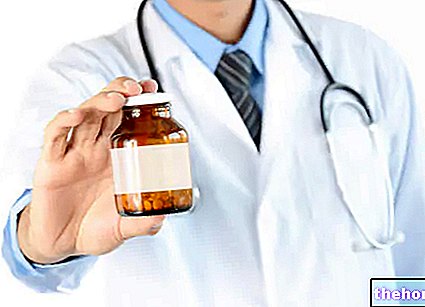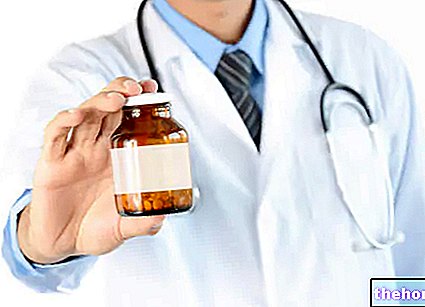Active ingredients: Silver sulfadiazine
SOFARGEN®® 1% CREAM
Why is Sofargen used? What is it for?
PHARMACOTHERAPEUTIC CATEGORY
Topical antibiotics and chemotherapeutic agents, sulfonamides.
THERAPEUTIC INDICATIONS
Prophylaxis and local antibacterial treatment of infections in case of II and III degree burns; local antibacterial treatment of varicose ulcers and bedsores and in general of dermatological diseases that are infected or susceptible to superinfections.
Contraindications When Sofargen should not be used
Hypersensitivity to the active substance or to any of the excipients. Since sulfonamides increase the possibility of neonatal jaundice, Sofargen should not be used in women at the end of pregnancy, in premature babies and in infants in the first months of life.
Precautions for use What you need to know before taking Sofargen
Sofargen should be applied with caution in the presence of hepatic or renal insufficiency.
In pregnant women and in infancy, the product should be used only in case of real need, under the direct supervision of the doctor.
Prolonged use, especially of the product, can give rise to sensitization phenomena. In this case it is necessary to interrupt the treatment and adopt suitable therapeutic measures. The same applies in the case of superinfection by resistant microorganisms.
In the treatment of burns of a large part of the body, serum concentrations of sulfonamide in adults can reach therapeutic ones. Therefore, in these patients it would be advisable to monitor these serum levels, renal function and the presence of sulfonamide crystals in the urine, stopping the therapy in case liver and / or renal function is compromised.
Furthermore, since propylene glycol, present as an excipient in the composition, can cause hyperosmolality when the product is applied to large burned areas, the serum osmolality must be periodically checked in these cases and, if necessary, the treatment must be interrupted. .
Interactions Which drugs or foods can modify the effect of Sofargen
Local proteolytic enzymes, applied simultaneously with Sofargen, can be inactivated by the presence of silver ions.
Tell your doctor or pharmacist if you have recently taken any other medicines, even those without a prescription.
Warnings It is important to know that:
The possible occurrence of hypersensitivity reactions involves the immediate interruption of treatment.
Use if pregnant or breastfeeding.
As there are no exhaustive experimental data on the possible effects of the drug on the fetus, Sofargen should not be used during pregnancy and lactation unless, in the opinion of the doctor, its use is indispensable and essential for the pregnant woman (see also the section Contraindications ).
Important information about some of the ingredients
Stearyl alcohol can cause local skin reactions (eg contact dermatitis). Propylene glycol can cause skin irritation. Methyl paraoxybenzoate can cause allergic reactions (including delayed).
Dose, Method and Time of Administration How to use Sofargen: Posology
After rapid cleansing of the lesions, immediately apply a uniform layer of Sofargen cream 2 or 3 mm thick on the affected surfaces.
The cream can be applied either directly on the lesions (possibly with the help of a sterile glove), or previously spread on a sterile gauze.
The application of the cream must continue without interruption once or twice a day, as long as there is the possibility of infection and until complete healing, both in spontaneous and surgical repairs.
At each renewal of the application, thoroughly cleanse the lesions with water or physiological solution.
Take care to reapply the cream on surfaces from which it was inadvertently removed.
Overdose What to do if you have taken too much Sofargen
There are no known cases of overdose.
In case of accidental intake of an excessive dose of Sofargen, notify your doctor immediately or go to the nearest hospital.
IF IN ANY DOUBT ABOUT THE USE OF SOFARGEN, CONTACT YOUR DOCTOR OR PHARMACIST.
Side Effects What are the side effects of Sofargen
Like all medicines, Sofargen can cause side effects, although not everybody gets them.
A few cases of transient leukopenia, rare local disturbances (pain and burning) and rare local allergic reactions have been reported.
The classic side effects of systemically administered sulfonamides cannot be excluded when treating large parts of the body.
Compliance with the instructions contained in the package leaflet reduces the risk of undesirable effects.
If any of the side effects gets serious, or if you notice any side effects not listed in this leaflet, please inform your doctor or pharmacist.
Expiry and Retention
Expiry: see the expiry date printed on the package.
Do not use the medicine after the expiry date stated on the package.
The expiry date refers to the product in intact packaging, correctly stored.
Store at a temperature not exceeding 30 ° C.
The product must be used within 6 months of first opening the container.
Medicines should not be disposed of via wastewater or household waste. Ask your pharmacist how to dispose of medicines you no longer use. This will help protect the environment.
KEEP THE MEDICINAL PRODUCT OUT OF THE REACH AND SIGHT OF CHILDREN.
Composition and pharmaceutical form
COMPOSITION
100 g of cream contain: Active Ingredient: Micronized Silver Sulfadiazine g 1. Excipients: stearyl alcohol, isopropyl myristate, propylene glycol, polyethylene glycol monostearate, polyoxyethylene sorbitanmonolaurate, methyl-p-oxybenzoate, distilled water.
PHARMACEUTICAL FORM AND CONTENT
1% cream
30 g tube
50 g tube
120 g tube
180 g tube
600 g jar
Source Package Leaflet: AIFA (Italian Medicines Agency). Content published in January 2016. The information present may not be up-to-date.
To have access to the most up-to-date version, it is advisable to access the AIFA (Italian Medicines Agency) website. Disclaimer and useful information.
01.0 NAME OF THE MEDICINAL PRODUCT
SOFARGEN
02.0 QUALITATIVE AND QUANTITATIVE COMPOSITION
Active principle
Micronized silver sulfadiazine 1 g
For the full list of excipients see section 6.1
03.0 PHARMACEUTICAL FORM
Hydrophilic cream.
04.0 CLINICAL INFORMATION
04.1 Therapeutic indications
Prophylaxis and local antibacterial treatment of infections in case of burns of I and III degree; local antibacterial treatment of varicose ulcers and infected bedsores and in general of dermatological affections infected or susceptible to superinfections.
04.2 Posology and method of administration
In burns Sofargen should be applied as early as possible.
After a quick cleansing of the injured parts, immediately spread a uniform layer of cream 2 or 3 mm thick on the burned surfaces. The cream can be applied either directly on the lesions, possibly with the help of a sterile glove, or previously spread on a sterile gauze. The application of Sofargen must continue without interruption, once or twice a day, as long as there is the possibility of " infection and up to complete healing, both in spontaneous and surgical repairs.
Each time the dressing is renewed, thoroughly cleanse the wounds with water or physiological solution by means of douching or sponging. Take care to promptly reapply the cream on surfaces from which it has been inadvertently removed.
In other cases, varicose ulcers, pressure sores, wounds and dermatological affections susceptible to infection, cleanse the injured part where necessary and apply a 2-3 mm thick layer of cream, following the same criteria described for the treatment of burns. The lesion must always be kept completely covered by the medication.
If a knee-high dressing is required, carry out portions of 20-30 cm of a bandage of adequate length, spread an abundant layer of cream, rewind the impregnated part, unwind another 20-30 cm and repeat the operation until the whole length of the bandage has been fully impregnated, then apply the required bandage.
04.3 Contraindications
Hypersensitivity to the active substance or to any of the excipients. As sulfonamides may increase the risk of neonatal jaundice, Sofargen should not be used in women at the end of pregnancy, in premature babies and in infants in the first months of life.
04.4 Special warnings and appropriate precautions for use
Sofargen should be applied with caution in the presence of hepatic or renal insufficiency.
The use of Sofargen can be risky in subjects with manifest glucose-6-phosphate dehydrogenase deficiency, as haemolytic phenomena may occur.
Prolonged use of the product can give rise to sensitization phenomena. In this case, treatment must be interrupted and suitable therapeutic measures adopted. The same applies to superinfection by resistant microorganisms.
In the treatment of burns of a large part of the body, serum concentrations of sulfonamide in adults can reach therapeutic ones. Therefore, in these patients it would be advisable to check these serum levels, renal function, the presence of any sulfonamide crystals in the urine and liver function, stopping therapy in the event that liver and / or renal function are compromised.
Furthermore, since propylene glycol, present as an excipient in the composition, can cause hyperosmolality when the product is applied to large burned areas, the serum osmolality must be periodically checked and, if necessary, the treatment must be interrupted.
04.5 Interactions with other medicinal products and other forms of interaction
Local proteolytic enzymes, applied simultaneously with Sofargen, can be inactivated by the presence of silver ions.
04.6 Pregnancy and lactation
As there are no exhaustive experimental data on the possible effects of the drug on the fetus, Sofargen should not be used during pregnancy and lactation unless, in the opinion of the doctor, its use is indispensable and essential for the pregnant woman (see 4.3).
04.7 Effects on ability to drive and use machines
It has no adverse effects on the ability to drive or use machines.
04.8 Undesirable effects
A few cases of transient leukopenia (0.4%), rare local disturbances (pain and burning) and rare local allergic reactions (0.3%) have been reported.
The classic side effects of systemically administered sulfonamides cannot be ruled out when treating large parts of the body.
04.9 Overdose
Any symptoms of overdose are not highlighted in the literature.
05.0 PHARMACOLOGICAL PROPERTIES
05.1 Pharmacodynamic properties
Pharmacotherapeutic group
Antibiotics and chemotherapy for topical use, sulfonamides ATC code D06BA01
Sofargen is a local broad-spectrum antimicrobial based on silver sulphadiazine, a metallorganic compound obtained by reacting silver nitrate with sulphadiazine.
The bactericidal properties of silver sulfadiazine are characterized by the silver ion, which determines its peculiar mechanism of action, clearly different from that of silver nitrate and sulfadiazine.
On microorganisms, silver sulphadiazine acts at the level of cell membranes, while silver nitrate acts on intimate structures. Sulfadiazine performs only bacteriostatic activity.
In the serosity of the lesions Sofargen releases the silver ion, whose bactericidal power is associated with the bacteriostatic effect of the sulfonamide radical. The silver sulfadiazine molecule is made up of 30.2% silver and 69.8% sulfadiazine.
In vitro assays have shown a broad antibacterial and antifungal spectrum for silver sulfadiazine. In particular, all strains of microorganisms commonly encountered in burned surfaces: Pseudomonas aeruginosa, Pseudomonas maltophilia, Enterobacter species, Enterobacter cloacae, Klebsiella, Escherichia coli, Serratia, Proteus mirabilis, Proteus morganii, Proteus rettgeri, Proteus vulgaris, Providencia, Citrobea Mima, Staphylococcus aureus, Staphylococcus epidermidis, Streptococcus Beta hemolytic, Enterococcus (Group D Streptococcus), Corynebacterium diphtheriae, Clostridium perfrigens, Candida albicans, were sensitive to extremely low concentrations of silver sulfadiazine, from 0.78 to 100 mcg compared to sulfadiazine 25 to 100 times.
Sofargen topical cream has a silver sulfadiazine concentration of 10,000 mcg / ml. Sofargen, 1% cream micronized silver sulfadiazine, is a white, soft, hydrophilic and water-miscible cream, insoluble in water and alcohol, easy to apply and easy to remove, consisting of highly skin-compatible and virtually harmless substances, in which there is the active principle silver sulfadiazine is finely dispersed in a micronized form which is therefore able to carry out the antiseptic activity more effectively.
Sofargen cream does not produce pain, mitigates inflammation, keeps the injured surface well hydrated, making the environment conducive to rapid regeneration of the epithelium, prevents bandages from adhering to wounds, avoids the formation of eschars and softens any stubborn crusts that may be present. ; it does not stain the skin or the linen.
In the local antiseptic treatment of burns of I and III degree Sofargen effectively contributes to dominate bacterial contamination, to prevent the risks of aggravation of infections and is well tolerated.
Due to its chemical nature, silver sulfadiazine does not inhibit carbonic anhydrase. No cases of systemic acidosis and hyperventilation have been reported in treated patients. Since the electrolyte balance is not altered, Sofargen is of particular importance in the treatment of pediatric patients.
Sofargen, micronized silver sulfadiazine, 1% cream, acts immediately and for a long time even in contact with normal and pathological organic liquids, such as blood, serum, pus, transudates and exudates; it is chemically stable, odorless, colorless; it gradually dissociates into organic liquids of injured surfaces; in the serosity of wounds the silver ion rate reaches 50-100 mg% 24-48 hours after application.
05.2 Pharmacokinetic properties
The topical absorption of Sofargen is clinically insignificant. The plasma level of the silver ion, even after extensive and repeated applications, never exceeds 3 mg / 100 ml, while the urinary concentration remains around 50 mg / 100 ml, values below the threshold for systemic risks.
The sulfadiazine radical is poorly absorbed through the skin: urinary elimination in 24 hours is on average 57 mg, a value considered to be well below the threshold for the induction of renal damage. However, the risk of systemic effects cannot be excluded.
05.3 Preclinical safety data
The LD50 of silver sulfadiazine, after oral administration in the rat, was found to be greater than 10 g / kg. Sofargen 1% cream, administered orally to rats, in doses up to 900 mg / kg did not cause toxic effects.
The LD50 for intraperitoneal administration was 126 mg / kg in the rat and 160 mg / kg in the mouse.
Furthermore, silver sulphadiazine does not exhibit mutagenic activity.
06.0 PHARMACEUTICAL INFORMATION
06.1 Excipients
Stearyl alcohol, isopropyl myristate, propylene glycol, polyethylene glycol monostearate, polyoxyethylene sorbitan monolaurate, methyl p-oxybenzoate, distilled water.
06.2 Incompatibility
There are no known incompatibilities.
06.3 Period of validity
The product is stable for 3 years. This period refers to the product in intact packaging, properly stored.
06.4 Special precautions for storage
Store at a temperature not exceeding 30 ° C.
The product must be used within 6 months of first opening the container.
06.5 Nature of the immediate packaging and contents of the package
30 g flexible tube. Pack of 1 tube - class C
50 g flexible tube. Pack of 1 tube - class C
120 g flexible tube. Pack of 1 tube - class C
180 g flexible tube. Pack of 1 tube - class H
600 g jar. Pack of 1 jar - class H
06.6 Instructions for use and handling
None
07.0 MARKETING AUTHORIZATION HOLDER
SOFAR S.p.A., viale Isonzo 8, Milan
08.0 MARKETING AUTHORIZATION NUMBER
A.I.C. 025561010, "1% cream", 30 g tube, June 1985.
A.I.C. 025561022, "1% cream" 50 g tube, July 1998.
A.I.C. 025561073, "1% cream", 120 g tube, February 2010
A.I.C. 025561046, "1% cream" 180 g tube, December 1999
A.I.C. 025561061, "1% cream" 600 g jar, December 1999
09.0 DATE OF FIRST AUTHORIZATION OR RENEWAL OF THE AUTHORIZATION
June 2010
10.0 DATE OF REVISION OF THE TEXT
November 2009























-nelle-carni-di-maiale.jpg)




